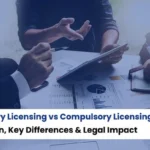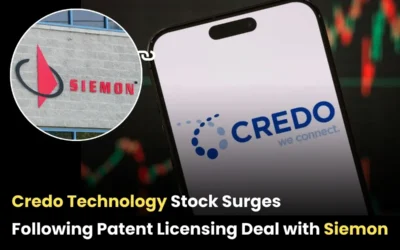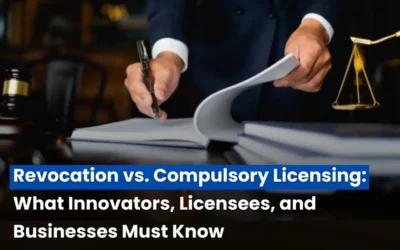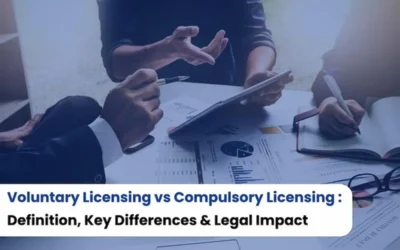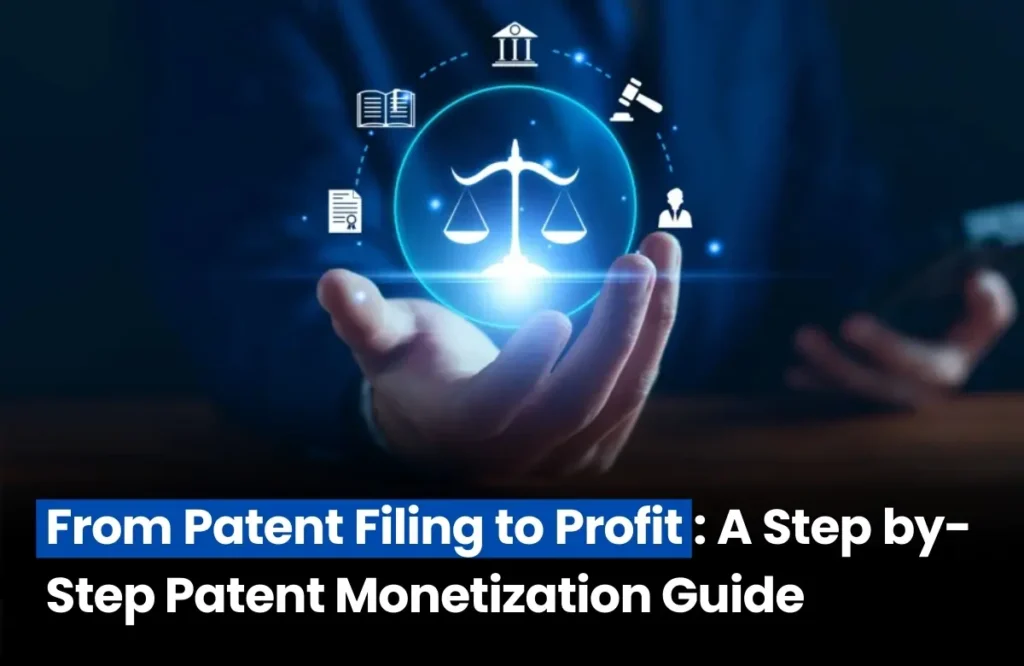
Having a patent is a great asset, but what truly makes it valuable is the monetary return it can bring in the future — whether through royalties, fees, or commissions. However, if you think the journey is as simple as building an idea, getting a patent, and then enjoying profits, here we have the Patent Monetization Guide for you. The process demands serious effort, time, money, and commitment before it can start generating real value. To make this journey smoother and reduce errors, we present a step-by-step Patent Monetization Guide — from filing a patent to turning it into profit. So, keep reading.
Step-by-Step Patent Monetization Guide
Step 1: Start with a Patent
Monetization is the process of turning patents into financial value. But this journey starts with owning a granted patent. To secure a patent, you must first have an innovative idea with real value, something unique that qualifies as intellectual property (IP). IP can take many forms, such as patents, trademarks, copyrights, geographical indications (GI tags), trade secrets, and industrial designs. In this guide, however, we will focus only on patents.
Once you have it, the next step is to think about monetization. But before any commercialization begins, you must determine the economic worth of your patent, a process known as patent valuation.
Step 2: Patent Valuation
Valuation simply means figuring out how much your patent is worth. There are four main approaches to do this:
- Cost Approach: Based on the total expenses involved in research, development, and filing the patent.
- Market Approach: Compares your patent.
- Income Approach: Estimates the future money/ value that it will generate.
- Option Approach: Looks at the patent like a financial option, considering its potential future opportunities and value.
- Step 3: Portfolio Audit & Market Assessment
Review your entire patent portfolio to spot inventions with high commercial potential. Then study the market to see where your technology fits, identify industries that need it, and list potential buyers or licensees.
Step 4: Choosing the Right Way to Monetize
It’s not an easy choice. If you pick the wrong path, you may end up with an underutilized patent or even lose the rights to one of your most valuable assets. That can be harmful for both businesses and investors.
Step 5. Negotiate and Structure Deals
- Set Clear Terms: Decide on royalty rates, exclusivity, geographic scope, and contract length to avoid confusion later.
- Protect Your Rights: Ensure agreements include clauses for quality control, reporting, and renewal options.
- Seek Expert Help: Work with IP lawyers or licensing specialists to draft contracts that safeguard your interests and maximize returns.
Step 6. Monitor, Enforce, and Reassess
- Compliance Checks: Regularly review agreements
- Enforce Rights: Take legal action if infringements occur, protecting the value of your patent.
- Reassess Value: Re-evaluate your patent portfolio over time, as market demand and technology trends may increase or decrease its worth.
Read Also: The Rise of Patent Monetization Strategies in the Digital Age
In general, there are four main ways to monetize a patent:
Licensing
You allow other companies or individuals to use your patent in exchange for royalties (usually between 0.5–10% of product revenue, depending on the industry). Licenses can be exclusive (only one licensee), non-exclusive (many licensees), or territorial (limited to certain regions).
Selling the Patent
You transfer all rights of your patent to a buyer in exchange for immediate payment. This is a good option if you want quick capital, plan to exit that technology field, or need funds for a new venture.
IP-Backed Financing
You can use your patent as collateral for loans or venture funding. The stronger and more enforceable your patent, the better terms you can get from lenders or investors.
Enforcement & Litigation
If someone uses your patent without permission, you can take legal action. This could lead to settlements, licensing deals, or court-awarded damages
Read Also: Draft Patents (Amendment) Rules 2025: Shocking Changes Every Innovator Must Know
Conclusion
Turning a patent into profit is not a one-step process — it’s a journey that requires planning, valuation, strategy, and constant management. From filing an idea as intellectual property to negotiating deals and monitoring returns, every stage plays a critical role in unlocking the true value of innovation




